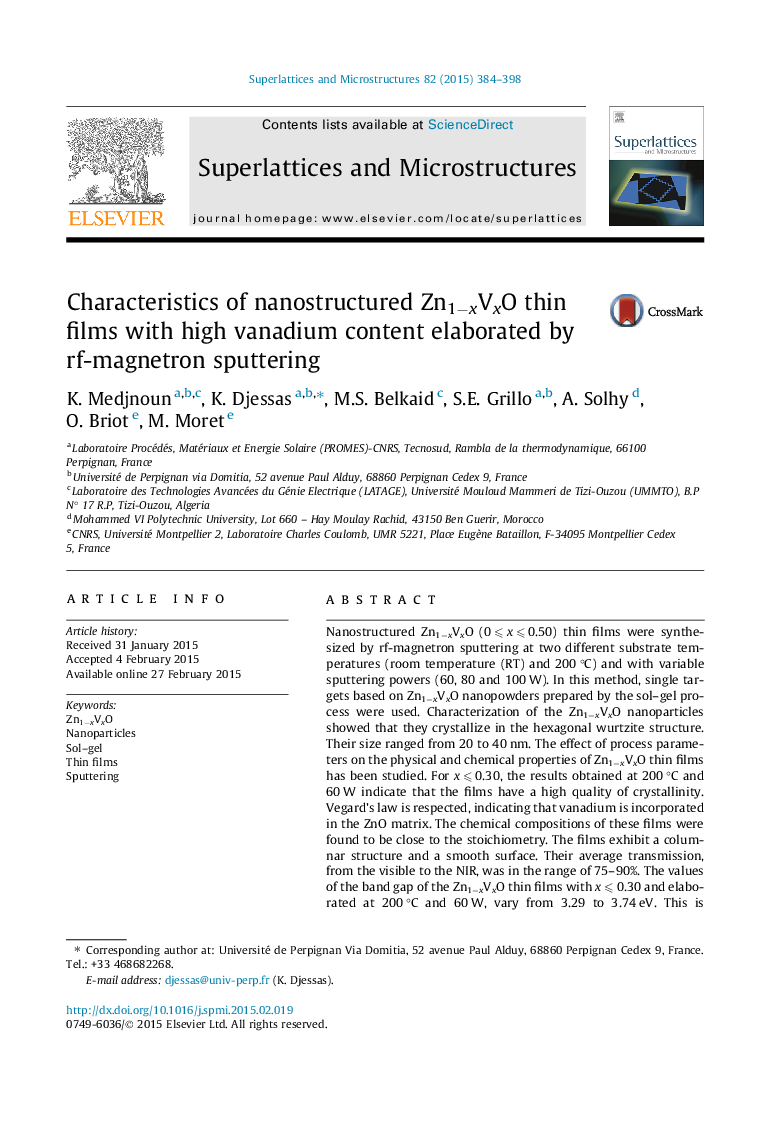| Article ID | Journal | Published Year | Pages | File Type |
|---|---|---|---|---|
| 1553223 | Superlattices and Microstructures | 2015 | 15 Pages |
•High quality of nanostructured Zn1−xVxO thin films obtained with high V content.•High transmittance for all the films from the visible to the NIR region.•The band gap of Zn1−xVxO films can be adjusted by varying the V content.•The cathodoluminescence reveals intense Near Band Edge emission (NBE).•A promising material for optoelectronic devices.
Nanostructured Zn1−xVxO (0 ⩽ x ⩽ 0.50) thin films were synthesized by rf-magnetron sputtering at two different substrate temperatures (room temperature (RT) and 200 °C) and with variable sputtering powers (60, 80 and 100 W). In this method, single targets based on Zn1−xVxO nanopowders prepared by the sol–gel process were used. Characterization of the Zn1−xVxO nanoparticles showed that they crystallize in the hexagonal wurtzite structure. Their size ranged from 20 to 40 nm. The effect of process parameters on the physical and chemical properties of Zn1−xVxO thin films has been studied. For x ⩽ 0.30, the results obtained at 200 °C and 60 W indicate that the films have a high quality of crystallinity. Vegard’s law is respected, indicating that vanadium is incorporated in the ZnO matrix. The chemical compositions of these films were found to be close to the stoichiometry. The films exhibit a columnar structure and a smooth surface. Their average transmission, from the visible to the NIR, was in the range of 75–90%. The values of the band gap of the Zn1−xVxO thin films with x ⩽ 0.30 and elaborated at 200 °C and 60 W, vary from 3.29 to 3.74 eV. This is consistent with blue shifting of near-band edge cathodoluminescence emission. Under particular growth conditions, the investigation shows that the Zn0.80V0.20O sample presents the best properties for potential use in various optoelectronic applications, namely: a single wurtzite phase, low surface roughness (Ra ∼ 0.2 nm), a high transparency of 90% in the UV–Vis–NIR, a wide band gap of 3.74 eV and a resistivity of ∼5 × 10+3 Ω cm.
